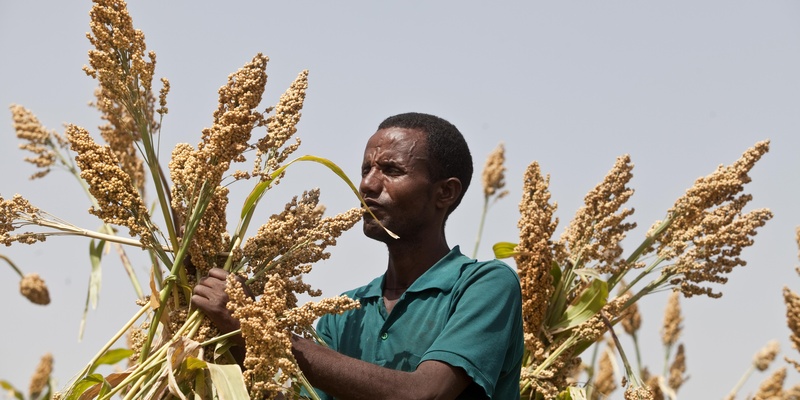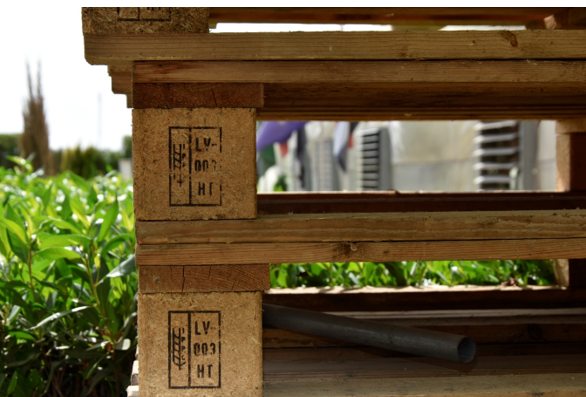SPOTLIGHT: Setting the standard: the global efforts behind plant health protection
Posted on Tue, 08 Jul 2025, 11:43

© FAO/Giulio Napolitano
Plant pests are responsible for the loss of up to 40 percent of global food crops every year. International standards help countries protect plant health and secure food supplies for a growing world population. ©FAO/Miguel Schincariol
How international standards keep pests at bay and trade flowing across borders
Protecting plant health is critical to feeding the world. Healthy crops are the foundation of food security, nutrition, livelihoods and sustainable trade. That’s why the Food and Agriculture Organization of the United Nations or FAO, through the International Plant Protection Convention (IPPC), works with countries to develop and implement plant health standards. These International Standards for Phytosanitary Measures (ISPMs) are science-based standards that prevent the spread of pests and protect the world’s food systems.
In 1881, five European countries came together to combat a tiny pest wreaking havoc on vineyards: Grape phylloxera. That collaboration planted the seed for what would eventually become a global framework to protect plants and secure the trade and livelihoods tied to them. Today, that framework is the IPPC, hosted by FAO, and its seemingly inconspicuous but powerful tools: the ISPMs.
Guardians of global trade and plant health
The movement of people and goods across borders comes with risks. A pest outbreak in one country can quickly threaten food security in another. ISPMs are internationally agreed-upon standards that help prevent the introduction and spread of plant pests. Developed under the IPPC, these standards are recognized in the World Trade Organization’s Agreement on the Application of Sanitary and Phytosanitary Measures (SPS Agreement), making them vital to harmonizing phytosanitary rules in international trade among countries.
“Behind every healthy crop and open border is a phytosanitary standard that made it possible”, says Avetik Nersisyan, IPPC Secretariat Lead for the Standard Setting unit. “ISPMs may seem indistinct, but they’re one of the most powerful tools we have to protect our food, our environment and each other”, he added.
How does an ISPM come to life?
Developing an ISPM is a globally inclusive and science-based process. It starts with a proposal submitted by an IPPC contracting party or a regional plant protection organization (RPPO) that identifies a need for new measures, such as a rising threat from an invasive species, or updates to existing ones. From there, technical experts draft a standard, which is then opened to extensive consultations with contracting parties, RPPOs, and other stakeholders who provide critical feedback. After revisions, the Commission on Phytosanitary Measures (CPM), IPPC’s governing body, evaluates and adopts the final version during its annual session.
Although developing an ISPM may take up to six years, every step is built on transparency, scientific evidence and collaboration. Governments, research institutions and industry representatives all play a role in shaping a standard that is technically justified and practically applicable.
The first ISPM, Principles of plant quarantine as related to international trade (ISPM 1), was adopted in 1993. Since then, the body of standards has grown to cover more plant health aspects from pest risk analysis to electronic certification of plants, plant products and regulated articles in trade.

Inspecting agricultural shipments at borders is a frontline defense against invasive pests. National Plant Protection Organizations apply international standards to keep plants healthy and trade safe. Left/top ©FAO/Marco Longari; Right/bottom ©FAO/Marco Longari
Putting standards into action
Once adopted, ISPMs guide how countries implement phytosanitary measures on the ground. National plant protection organizations (NPPOs) rely on these standards to inspect cargo, certify plant products or prevent and manage pest outbreaks.
One widely implemented standard is ISPM 15, which regulates the treatment of wood packaging materials used in shipping. A simple stamp on a crate indicates it has been heat-treated to kill pests, allowing goods to move safely across borders. To implement ISPM 15 effectively, an instructional guide and an e-learning course were developed for NPPOs.
Another example is ISPM 12, which underpins the IPPC ePhyto Solution, the digital system for exchanging phytosanitary certificates. By reducing paperwork and fraud, ePhyto helps trade move faster and more securely.
Some standards, like those on Pest Free Areas or Pest Risk Analysis, help countries gain access to new markets by demonstrating that their crops meet international safety criteria.
For many countries, ISPMs are a gateway to global trade. They protect local crops, ecosystems and farmers' livelihoods while enabling safe exports and imports of agricultural products. This is especially important for developing countries seeking access to new markets. By reducing the risk of pest spread, ISPMs support not just trade, but also food security and environmental sustainability.
"No single country can protect plant health alone", says Sarah Brunel, IPPC Secretariat Lead for the Implementation and Facilitation unit. "ISPMs are our collective framework for building safer, more resilient plant protection systems worldwide".

Wood packaging used in international trade can carry hidden pests across borders. ISPM 15 ensures that wood packaging is properly treated and marked, safeguarding forests and agriculture worldwide. ©FAO-IPPC/ Anita Tibasaaga
As global challenges to plant health grow, from climate change to increased trade volumes, the importance of ISPMs continues to rise. Developing and implementing them relies on global cooperation. Countries can participate in this process by nominating to join expert drafting groups, funding standard-setting activities, or engaging in public consultations. Platforms like the IPPC Plant Health Campus also provide free e-learning courses to build the capacity of plant health professionals worldwide.
From a tiny aphid in 19th-century vineyards to today’s transboundary plant pests, the world has come a long way. ISPMs are now one of our best lines of defense, quietly protecting global agriculture, trade and food security every single day.

Standard Setting Procedure - IPPC
Learn more
- Website: International Plant Protection Convention (IPPC)
- Publication: Adopted Standards (ISPMs)
- Story: Adopting and promoting global paperless trade using ePhytos: the experience of the Republic of Korea
- Story: Prevent. Protect. Sustain. How the IPPC is protecting agriculture and trade by reducing the risk of pest spread through wood packaging material

